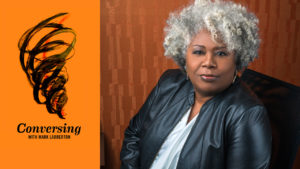The new version of “Roots” that aired this past week was an important reminder of the degradation and brutality experienced by enslaved Africans in America. While the violence, rape and murders depicted in “Roots” shocked many viewers, the graphic miniseries helped underscore the real costs of slavery, the humanity of the enslaved and the depravity of the enslavers — unlike idealized pop-culture depictions such as “Gone With the Wind.” As a historian, I am dismayed at those who believe that people should “move on” from more than 250 years of slavery that continues to shape our collective history. For a deeper understanding of slavery’s toll in the United States, here’s some further reading and viewing.
“Help Me to Find My People: The African American Search for Family Lost in Slavery,” by Heather Williams
Williams’s meticulously researched, poignant work looks at how the sale of enslaved children, mothers and fathers separated families, even after emancipation. Williams draws on newspaper advertisements, church publications and letters to chronicle the search for sold loved ones in these families’ own voices, and she shows the emotional pain people experienced. A must-read for understanding how truly devastating slavery was and how seeking lost family members during and after slavery created both hope and despair.
“North American Slave Narratives,”
Documenting the American South
This open-access resource is full of manuscripts, broadsides, letters and pamphlets written by slaves. The voices of those who experienced the horrors of slavery are invaluable for reclaiming the veracity of their experiences, giving the reader words and images that are not mediated by masters’ voices.
“Out of the House of Bondage: The Transformation of the Plantation Household,” by Thavolia Glymph
In “Roots,” the plantation mistress, Nancy, plays an especially harsh role. Glymph’s book looks at how slave women interacted with the women of the planter class. Cruelties detailed by female former slaves in interviews with writers from the Works Progress Administration in the 1930s help illuminate how their mistresses were invested in supporting slavery and white supremacy. Glymph shows how domestic labor is key to understanding freedom and civil rights.
“The Birth of a Nation” (2016)
The story of Nat Turner and the rebellion he led, due for release in October. Turner starts out as a traveling slave preacher who makes money for his master by calling for peace, but his eventual realization of his complicity in the evils of slavery turns him into a leader of an uprising for freedom. Cleverly reusing the title of a 1915 film lionizing the Ku Klux Klan, the movie destroys the stereotypes written by William Styron in “The Confessions of Nat Turner.”
“Soul by Soul: Life Inside the Antebellum Slave Market,” by Walter Johnson
A compelling book that gets at the heart of what the sale of Africans and African Americans in the New Orleans slave markets entailed, both in human and financial costs: the separation of families; the ways people were sold to cover debts of their masters; how the enslaved employed strategies to affect their sales.
“The Spread of U.S. Slavery, 1790-1860,” by Lincoln Mullen
This interactive map created by Mullen, a history professor at George Mason University, shows the spread of slavery in America, detailing where enslaved and free African Americans lived before the Civil War. It gives an excellent view of the pervasiveness of slavery in the United States.
“Narrative of the Life of Frederick Douglass, an American Slave,” by Frederick Douglass
“I therefore hate the corrupt, slaveholding, women-whipping, cradle-plundering, partial and hypocritical Christianity of this land.”
Douglass’s searing first-person account of the brutality of slavery, religion’s role in his master’s savagery and his eventual escape is a powerful story of slavery’s destructiveness. Yes, it’s often taught in high school, but Douglass’s story bears another look, even if you’ve read it before. The “Narrative” is a testament of Douglass’s will to endure throughout the many atrocities he experienced, and when published in 1845, it was instrumental in furthering abolitionists’ cause.
“Many Thousands Gone: The First Two Centuries of Slavery in North America,” by Ira Berlin
Berlin’s book is a thorough history of slavery that presents a very different picture than the traditional one that focuses on the years leading up to the Civil War. Berlin shows what slavery was like before cotton plantations developed and how it changed afterward, juxtaposing the history of slavery with the history of the American idea of race. The book works against stereotypes, showing how slavery was constantly made and remade over its first 200 years.



